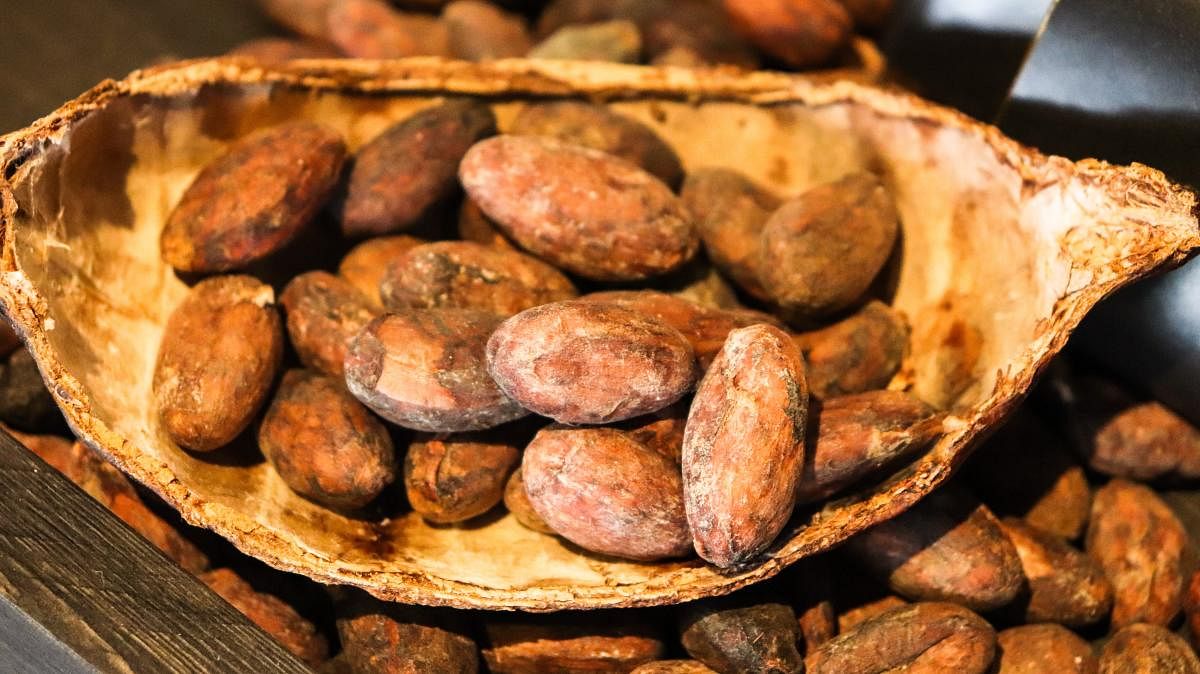The bold & fascinating cacao

The cacao tree is the primary source of all chocolate and chocolate products. It grows naturally in the hot and humid climates of South America, regions of Africa and the West Indies. Cacao has been known to be cultivated in Mexico, Central and South America since at least 1250 BC — years before America was discovered. The regions, 20° north and south of the equator, have the ideal climatic conditions to grow the cacao tree.
Cacao was a part of many ancient cultures with evidence of cacao-based food dating back many thousands of years. Most well-known among them were the South American cultures of the Olmecs, Aztecs and Mayans who cultivated the cacao plant as a crop. Theobroma Cacao, its official Latin name, means ‘food of the gods’. The Aztecs believed that their Gods gave these beans to them and considered them more valuable than gold. The cacao bean was so important that it was used as a currency in trade to buy food and other goods. It was believed that the cacao bean had magical and divine properties. Traditionally, cacao beans were used to make sacred drinks that were offered to the gods and shared during religious ceremonies, weddings, and birth and death ceremonies.
It is believed that the Aztec emperor Montezuma held a banquet for the Spanish explorer Hernando Cortes, mistaking him for a reincarnated deity instead of an invader and offered him the bitter cacao drink. Thus the Spanish Conquistadors discovered the value of the local cacao crop. The cacao drink was too bitter for the European taste buds, so it was mixed with honey or cane sugar and spices when introduced in the Spanish courts in the 1500s. Though mainly reserved for the social elite, it quickly became popular throughout Spain and was considered to have nutritional, medicinal and even aphrodisiac properties. The Spanish kept the production method a secret from other Europeans for almost 100 years after they discovered it. However, it spread quickly to France, Italy and England by the early 1600s and fashionable “chocolate houses” for the wealthy emerged throughout Europe. The onset of the Industrial Revolution and the invention of the steam engine diminished the exclusivity of chocolate by making mass production possible.
Melt in the mouth
Various technological advances as well as the addition of items like sugar and milk powder led to chocolate, as we know it today. In 1828, Dutch chemist CJ van Houten came up with a method to treat cacao beans with alkaline salts. This method helped create powdered chocolate that could be easily mixed with water. This powder was called Dutch Cocoa and the method was referred to as Dutch processing. Van Houten (or his father) also invented the cocoa press, which separated cocoa butter from cocoa beans thereby easily producing inexpensive cocoa powder. This made the creation of a wide variety of chocolate products affordable to everyone and also led to the mass production of chocolate.
For the most part of the 1800s, cacao was enjoyed as a milk-based beverage instead of being mixed with water. A British chocolatier J S Fry and Sons, in 1847, discovered that by mixing melted cacao butter back into Dutch cocoa with sugar he could make a moldable chocolate paste, thus creating the first solid, moulded eating chocolate. A few years later, in 1876, Swiss chocolatier Daniel Peter, was known to have added dried milk powder to create milk chocolate. Several years later he, along with his friend Henri Nestle, established the Nestle Company and introduced milk chocolate to the masses. Until 1879, chocolate was still hard and not very easy to chew, however, another Swiss chocolatier, Rudolf Lindt, created the conch machine. This machine would blend the ingredients into an even mixture and aerate the chocolate which would result in a smooth, delectable, “melt in the mouth” texture. The early 1900s saw many family-run chocolate companies like Nestle, Mars, Cadbury and Hershey mass-produce various kinds of chocolate confectioneries. Most commercial chocolates made these days are highly processed and chemically treated to improve shelf life. Some chocolatiers still make their creations by hand to retain cacao in its purest form possible.
What is the difference between cocoa and cacao? While some say that there is no difference and that they are one and the same and some say that “cacao” refers to the tree, pod and bean and cocoa refers to the bean after it has been fermented, dried and roasted. However, most chocolate connoisseurs would agree that the term “cacao” is used to identify items in their raw state, uncooked and unprocessed, unrefined, with no added sugar, dairy and no chemicals. Cocoa on the other hand is more processed using chemicals and high degrees of heat, which removes most of its anti-oxidising and nutritive properties.
Cacao bean varieties
The Theobroma cacao tree takes about four years to mature and produce oval pod-like fruits that are about 5–12 inches long. Each pod contains approximately 30–50 seeds, which are called cacao beans.
The colour of ripe cacao pods ranges from a bright brownish yellow/orange to a purplish colour. It’s an evergreen tropical plant and is typically harvested twice a year. After the ripe pods are removed from the tree, they are cut open and the seeds of the cacao beans, which are covered by a white pulp, are further processed.
(The author is India’s leading pastry chef based in Bengaluru who exudes the vibe of a guru — calm, peaceful and funny. A pandora of knowledge, he is Master Shifu in disguise — a modern teacher who imbibes the art & science of baking. He’s an avid reader and a tabla player who loves to sway to his own tunes!)